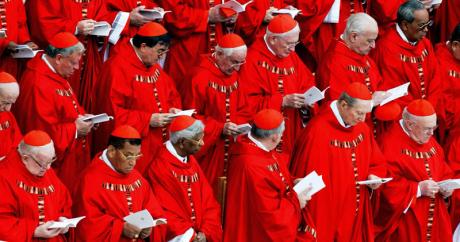reflections on orthodoxy - 1
To get away from the polemical side for a bit, let me explore the psychology of religious orthodoxy via the penultimate chapter in Boyer’s Religion Explained, entitled ‘Why doctrines, exclusion and violence?’
This chapter starts more provocatively than it needs to, methinks, and it sets up a challenge that Boyer doesn’t really rise to:
Here is a simple scenario: People in a group tend to have a similar description of supernatural agents, a local doctrine of what gods or spirits are up to. The very fact that people in a group share this religious ideology and perform important rituals together sharpens their perception that they are indeed a group with clearly marked boundaries. Worshiping the same god creates a community and by implication gives that extra edge to the feeling that people with different gods or spirits really are potential enemies. Indeed, people who become deeply involved in religion, for whom it is a matter of vital importance that their doctrine is the only source of truth, will not hesitate to massacre the one who seem not to acknowledge this obvious fact or whose commitment is too lukewarm. The most heinous crimes will be a celebration of the True Faith. This is how gods and spirits lead to group cohesion, which leads to xenophobia, which leads to fanatical hatred.
Practically everything in this scenario is misguided.
Boyer often uses this device, and it becomes a bit irritating. Needless to say, he doesn’t convincingly demonstrate the misguidedness of this scenario. What he does, in the thirty pages that follow, is fill out its details, providing plenty of counter-examples along the way. But these counter-examples come from tribal religions, not the big, politicized religions, the fascist monotheisms as Onfray calls them, and these are the ones we’re largely concerned about.
Still, it’s true enough that in some parts of the world there are beliefs in spirits and ancestors without any systematic religion at all, while in other parts, such as in Java, people practice a number of different religions at the same time, without necessarily feeling a sense of confusion about them. It’s the growth of religious specialists, argues Boyer, that creates fault lines between different religions and denominations.
The recognition of specialists within a religious tradition starts out in an ad hoc fashion. Reputations develop [often in ambiguous terms – the shaman may be a witch or evil spirit in disguise] and certain skills or orientations are handed down from parents to kids. With growing recognition comes an increasing division of labour, an increasing specialization.
Rituals become more standardized, and the specialists come to be practitioners of a particular skill, of sorts, rather than just someone wise in the ways of the spirits. What’s more, they become the molders of doctrine and orthodoxy [think of Paul of Tarsus and Augustine of Hippo]. Boyer claims that ‘doctrines are the way they are because of the organization of religious institutions, not the other way around’. When Paul was around there wasn’t much of a religious institution to speak of, and of course his writings had an impact in shaping future doctrine.
Of course, such an influence implies literacy. With literacy, orthodoxy and doctrine can be codified. It’s to be noted that often the specialists were the only people who were literate, and it’s no accident that masses were delivered in Latin and only initiates were permitted to read the Bible in the early days. Boyer describes this in terms of a guild mentality.
I’ll look into this further next time.
Labels: the faith hope



0 Comments:
Post a Comment
Subscribe to Post Comments [Atom]
<< Home